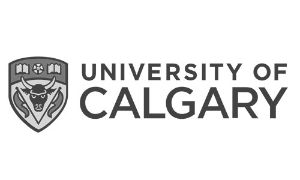Human Footprint and Vegetation Trend: 1950 to 2021
Summary of trends in human footprint and vegetation, from 1950 to 2021, in Tolko's Southern Operating Area.
Human footprint and vegetation trend highlights from 2000 to 2021:
Human Footprint
Vegetation Types
Human Footprint
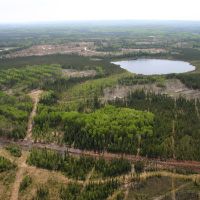
Forestry Footprint
Deciduous
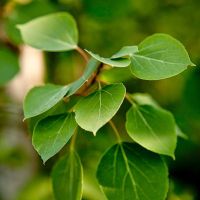
Mixedwood
Introduction
“Coarse-filter” monitoring of human footprint and native vegetation complements “fine-filter” monitoring of species by providing detailed information on habitat changes, a main driver of species changes.
- Tracking and managing changes in land use and human footprint is important to minimize impacts to biodiversity[1].
- In addition, land base monitoring of major vegetation types provides information on what types might be disproportionately affected by human footprint, and where management efforts may need to be focused.
- Located near the town of Slave Lake, Tolko’s Southern Operating Region has a long history of human development, consisting mostly of forestry and energy footprints. While the rate of forestry development has continued to increase at a fairly constant rate since 1985, energy development has slowed since 2000.
In this section, trend (from 1950 to 2021) in human footprint and native vegetation is summarized for Tolko’s Southern Operating Area.
Results
Trend in Human Footprint
The change in human footprint between 2000 and 2021 in the Southern Operating Area was:
total human footprint
Forestry footprint
Forestry Footprint, Net
energy footprint
Highlights
- In Tolko’s Southern Operating Area, human footprint increased by +9.6 percentage points over the 50-year time frame between 1950 and 2000 (from 0.1% to 9.7%). A comparable area was disturbed between 2000 and 2021, with human footprint increasing by 8.0 percentage points, from 9.7% to 17.7%.
- The forestry footprint was negligible in 1950, gradually increasing to cover 1.8% of the landscape by 1985 and 6.0% by 2000. Between 2000 and 2021, it grew by an additional 7.8 percentage points, reaching 13.8% (excluding forest recovery). During this period, the forestry footprint expanded at a steady rate of approximately 0.37% of the region per year.
- Accounting for recovery of harvest areas lowers the actual 2021 forestry footprint of 13.8% to a net footprint of 9.4%. This implies an average recovery of 31.9% for forestry footprint between 2000 and 2021, which amounts to 4.4% of the entire region.
- Energy footprint climbed slowly between 1950 and 2000, and showed a slow, steady increase from 2000 to 2021, at a rate of 0.024% of the region per year.
- The remaining footprint types increased by only small amounts between 1950 and 2021.
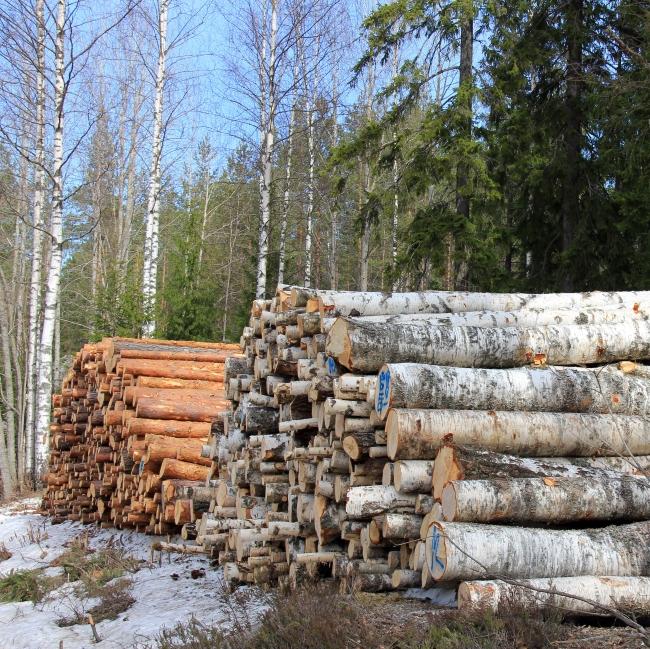
Forestry footprint increased at a fairly constant rate from 2000–2021, increasing faster after 2015.

Energy footprint increased at a low constant rate from 2000 to 2021.
View as Graph
View as Table
Trend in Human Footprint. The trend in the per cent (%) area of total human footprint and by human footprint category in the Southern Operating Area between 1950 and 2021. Trend data are available for 1950 and 1985, and missing 2002–2003. The trend table summarizes the most recent changes from 2000–2021. Total human footprint includes all categories other than Forestry, Net. Hover over categories in the legend (graph view) to highlight the corresponding trend line. Hover over trend lines to see data values. Error bars represent 95% confidence intervals.
Results
Trend in Vegetation Types
The change in vegetation type between 2000 and 2021 in the Southern Operating Area was:
white spruce
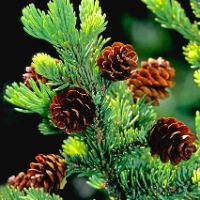
pine
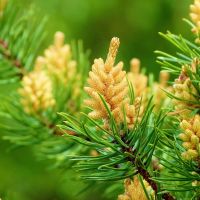
deciduous

mixedwood
Highlights
- Deciduous was the vegetation type most impacted by human footprint; it had the largest percentage point drop from 1950 to 2021, with half of the decrease happening between 2000 and 2021 (2.9 percentage points decrease from 29.1% to 26.2%). The proportional area that has been affected by human footprint each year is high: 1.4% per year from 2000 to 2021. These numbers do not account for forestry recovery.
- Mixedwood was the second most impacted vegetation type, with a 5.2 percentage point drop from 1950 to 2021, and 2.5 percentage points from 2000 to 2021. Human footprint has been affecting 0.98% of mixedwood per year.
- White Spruce—which covers a similar area to mixedwood—was only converted to human footprint at the rate of 0.14% per year since 2000.
- Pine stands, which cover the smallest area in the region, decreased at the same rate as White Spruce stands.
- Very small areas of lowland stand types were impacted by human footprint between 1950 and 2021.
View as Graph
View as Table
Trend in Vegetation Types. The trend in the per cent (%) area of broad stand types over time in the Southern Operating Area between 1950 and 2021. Trend data are available for 1950 and 1985, and missing 2002–2003. The trend table summarizes the most recent changes over 2000–2021. Hover over categories in the legend (graph view) to highlight the corresponding trend line. Hover over trend lines to see data values. Error bars represent 95% confidence intervals.
Trend in Old Forest Stands >120 Years
The change in old forest (>120 years), by vegetation type, between 2000 and 2021 in the Southern Operating Area was:
white spruce

pine

deciduous

mixedwood
Highlights
- In the Southern Operating Area, the area of old forest increased significantly between 2000 and 2021 for deciduous (+1.2%) and mixedwood (+0.7%) stand types, with a smaller increase for White Spruce (+0.3%). This reflects a cohort from the late 1800s reaching the 120-year age threshold. However, these old stands still represent a small proportion of the landscape (see y-axis scale for context).
- While the area of old mixedwood and White Spruce stands increased, recruitment slowed down and was overtaken by harvest in the last decade.
View as Graph
View as Table
Trend in Vegetation Types—Old (>120 years) Forest. The trend in the per cent (%) area of broad stand types over time in the Southern Operating Area between 2000 and 2021, for forest >120 years old. Trend data are missing for 2002–2003. The trend table summarizes the changes over 2000–2021. Hover over categories in the legend (graph view) to highlight the corresponding trend line. Hover over trend lines to see data values. Error bars represent 95% confidence intervals.
References
Shackleford, N., R.J. Standish, W. Ripple, and B.M. Starzomski. 2017. Threats to biodiversity from cumulative human impacts in one of North America’s last wildlife frontiers. Conservation Biology 32(3): 672-684. https://doi.org/10.1111/cobi.13036




